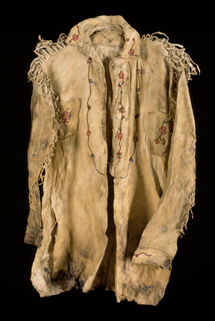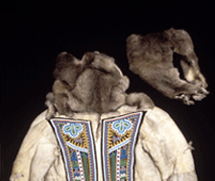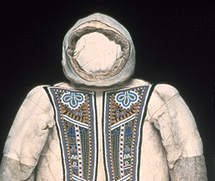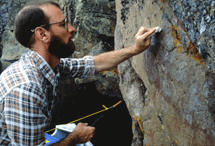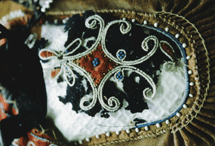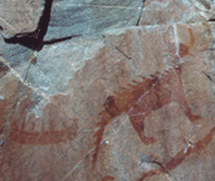Conservation services for Indigenous cultural centres and collections
Indigenous artifacts
The recent repatriation of many First Nations, Métis, and Inuit artifacts has given responsibility for the long-term care and well-being of these objects to Bands and cultural centres.
Many groups have customs that dictate the care and handling of sacred or other important items, and the Canadian Conservation Institute (CCI) recognizes the importance of respecting all such protocols. These objects will be used and looked after in traditional ways by the Elders or those who have the authority to do so. However, other items in cultural centres and private homes can benefit from the preventive conservation approaches used in museums, galleries, and archives.
Over the years, CCI has gained considerable experience with Indigenous artifacts such as totem poles, ivory carvings, quill work, and feather work, as well as rock art sites.
See also the Policy for serving Indigenous clients and preserving Indigenous collections.
Conservation questions
The Canadian Conservation Institute can answer many questions regarding their conservation services, such as the following:
- Who can provide advice about facilities development planning?
- Are the repatriated objects contaminated with pesticides?
- What are the risks and priorities for archival materials including audio and video tapes and other electronic media?
- Are any of the glass beads in a collection actively deteriorating?
- How can an insect infestation in fur and feather objects be handled?
- Is mould a threat to an archival collection?
- What is the best way to pack and ship a collection to prevent damage?
- What impact will cultural tourism have on the preservation of a site?
Preventive conservation
Preventive conservation is a bit like preventive medicine—providing care to maintain artifacts in good condition for as long as possible. CCI offers customized and localized training, advice, and on-site consulting services to assist with this.
Conservation and restoration treatments
Badly damaged artifacts may require specialized treatments. These are usually done at CCI, although many can be undertaken on site. In all cases, the object's owner, the community leaders and Elders, and the conservator work together to develop practical and ethical treatments.
Leading-edge research, innovative approaches, world-class reputation
The Canadian Conservation Institute has been a pioneer in the conservation of cultural heritage since 1972, delivering a wide range of services and products to clients around the world. CCI staff have worked closely with hundreds of museums, art galleries, heritage sites, academic institutions, and other heritage organizations to help them preserve their collections. The specialists at CCI can answer your general information requests or work with you to develop cost-effective solutions to your complex conservation problems.
For free advice or more information about CCI services, and fees, please contact Client Services at:
1030 Innes RoadOttawa, Ontario K1B 4S7
Canada
- Tel.:
- 613-998-3721
- Fax:
- 613-998-4721
- E-mail:
- pch.ICCservices-CCIServices.pch@canada.ca
